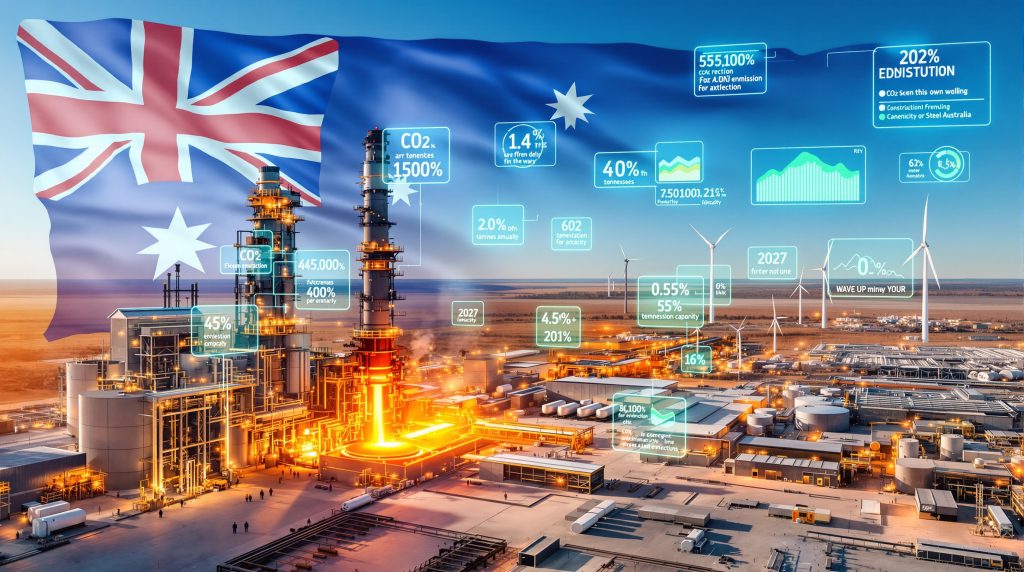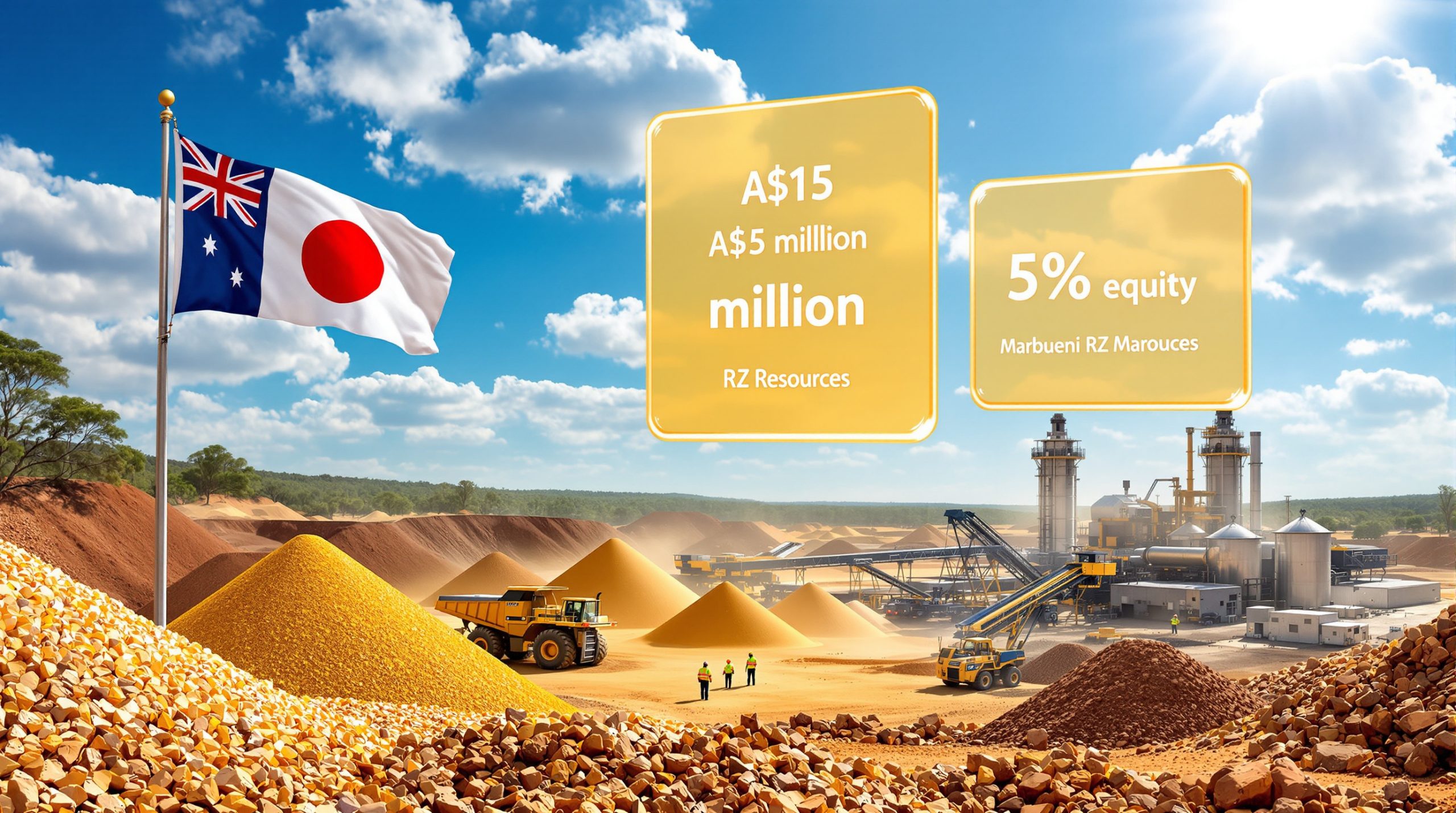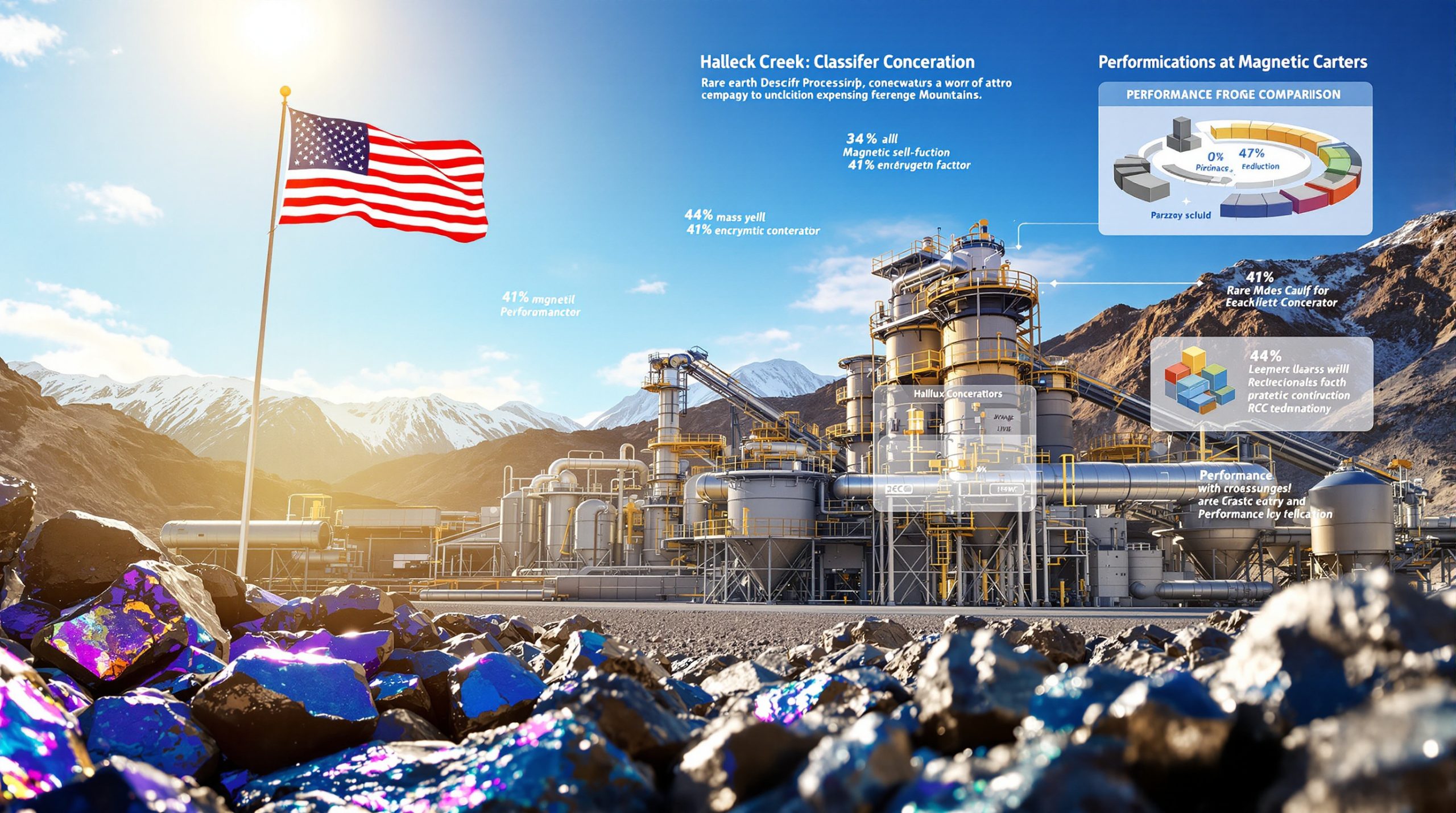Understanding Western Australia's Revolutionary Steel Initiative
Western Australia has launched a groundbreaking approach to industrial decarbonisation through its comprehensive low-CO2 steel support plan. This initiative represents more than just environmental policy; it fundamentally reshapes how governments can catalyse sustainable industrial transformation through strategic market intervention. The comprehensive support framework demonstrates Australia's commitment to green metals leadership while establishing new benchmarks for government-industry collaboration.
The programme establishes direct government procurement commitments that guarantee market demand for cleaner steel products, effectively eliminating the commercial uncertainty that traditionally hampers early-stage technology adoption. This approach creates immediate revenue streams for producers willing to invest in advanced manufacturing processes while simultaneously demonstrating real-world applications in critical infrastructure development.
Strategic Procurement Framework and Implementation
Market Creation Through Government Demand
The Western Australian government has established a direct procurement mechanism targeting low-emission steel products through an expression of interest process. This framework creates guaranteed market demand by committing to utilise these materials across government infrastructure projects and public works initiatives.
This demand-side intervention addresses one of the most significant barriers facing clean technology adoption: market uncertainty during the crucial early deployment phase. Furthermore, by providing assured revenue streams, the programme enables producers to justify substantial capital investments in advanced manufacturing technologies that align with broader industry innovation trends.
Enhanced Evaluation Mechanisms
Procurement System Modifications:
• Priority scoring systems that favour domestic low-emission steel suppliers
• Environmental performance metrics integrated into supplier evaluation criteria
• Streamlined approval processes for qualified sustainable steel producers
• Long-term contracting opportunities supporting investment planning and financial modelling
The procurement rule modifications create competitive advantages for local steelmakers investing in cleaner production methods. These changes extend beyond simple preference systems to encompass comprehensive evaluation frameworks that weight environmental performance alongside traditional cost and quality considerations.
Infrastructure Integration Requirements
Government infrastructure projects now mandate the incorporation of low-emission steel products, creating consistent demand volumes while showcasing practical applications in real-world construction environments. This requirement ensures steady market uptake as Western Australia continues its extensive infrastructure development programmes.
Advanced Technologies Driving Emission Reductions
Electric Arc Furnace Technology Implementation
Electric arc furnaces represent the primary technological pathway currently being deployed across Western Australia's steel production landscape. These systems utilise recycled scrap steel as primary feedstock, achieving dramatic emission reductions compared to traditional blast furnace operations that depend on coal-based reduction processes.
Emission Performance Comparison:
| Production Method | CO2 Emissions (tonnes per tonne steel) | Reduction vs. Traditional |
|---|---|---|
| Blast Furnace | 2.1 | Baseline |
| Electric Arc Furnace | 0.4-0.8 | 60-80% reduction |
| Hydrogen-Based DRI | 0.1-0.3 | 85-95% reduction |
The technology enables significant carbon footprint reductions while maintaining steel quality standards required for construction applications. EAF systems operate by melting scrap steel using electrical energy, eliminating the need for carbon-intensive coal coking processes that characterise traditional steelmaking.
Hydrogen-Powered Direct Reduction Innovation
Advanced facilities throughout the region are exploring hydrogen-powered direct reduction iron production, which completely eliminates coal dependency from the steelmaking process. This technology converts iron ore into metallic iron using hydrogen gas, producing only water vapour as a byproduct.
The hydrogen-based approach represents the frontier of clean steel production, offering emission reductions exceeding 85% compared to conventional methods. However, implementation requires substantial hydrogen production infrastructure, typically sourced from renewable energy integration through electrolysis processes.
Hot-Briquetted Iron Processing Systems
HBI technology creates dense, high-quality iron units serving as premium feedstock for electric arc furnaces. This process enables higher-grade steel production with reduced energy consumption and emissions compared to traditional raw material preparation methods.
The technology produces metallic iron products with superior density and reduced impurity levels, making them particularly valuable for specialty steel applications requiring enhanced performance characteristics.
Industry Leaders Spearheading Australia's Green Steel Revolution
Green Steel of Western Australia Development
Green Steel of Western Australia represents the state's flagship low-emission steel initiative, having received regulatory approval for a substantial electric arc furnace facility with annual production capacity of 450,000 tonnes. The project timeline includes construction commencement in 2026 with full operational status achieved by 2027.
GSWA Project Technical Specifications:
• Annual production capacity: 450,000 tonnes
• Primary product focus: Construction rebar manufacturing
• Feedstock source: Recycled scrap steel materials
• Core technology: Electric arc furnace systems
• Commercial operation start: 2027
The facility will focus primarily on rebar production for construction applications, utilising recycled scrap steel as the primary raw material input. This approach aligns with circular economy principles while meeting growing demand for sustainable construction materials, as outlined in Australia's green steel revolution.
NeoSmelt Consortium Collaborative Approach
The NeoSmelt consortium represents a pioneering collaborative model comprising five major metal and energy companies working together to accelerate direct reduction iron technology deployment. This approach combines specialised expertise across the entire value chain to reduce development risks and accelerate market entry.
NeoSmelt Investment and Technical Framework:
• Western Australia government investment: A$75 million
• Federal government grant allocation: A$19.8 million (June 2025)
• Planned annual capacity: 30,000-40,000 tonnes DRI
• Technology focus: Hydrogen-based reduction processes
• Development model: Multi-company consortium structure
The consortium model demonstrates how collaborative approaches can pool resources, share risks, and accelerate technology development timelines. This structure enables smaller companies to participate in large-scale industrial transformation while leveraging combined expertise and financial resources. Additionally, this collaborative framework aligns with broader strategic priorities for low-emissions metals outlined by industry stakeholders.
Comprehensive Government Financial Support Architecture
Federal Investment Fund Establishment
The Australian federal government established the A$1 billion Green Iron Investment Fund specifically targeting early-stage low-emission steel and iron production projects. This substantial commitment provides both direct equity investment and loan guarantee mechanisms designed to reduce commercial risks during the critical technology deployment phase.
The fund represents one of the largest government commitments globally to steel industry decarbonisation, signalling strong federal support for industrial transformation initiatives. Investment criteria focus on projects demonstrating technological viability and commercial scalability potential whilst supporting effective capital raising strategies.
State-Level Strategic Investment Programs
Western Australia's targeted investment strategy concentrates on proven technologies with near-term commercial deployment potential. The state's A$75 million investment in the NeoSmelt consortium demonstrates commitment to consortium-based development models that leverage combined industry expertise and shared risk distribution.
This investment approach prioritises projects with established technology pathways and clear commercial timelines, ensuring government resources support initiatives with high probability of successful deployment and market impact.
Grant Distribution and Timeline Analysis
Recent Federal Funding Allocations:
• June 2025: A$19.8 million awarded to NeoSmelt consortium
• February 2025: A$1 billion Green Iron Investment Fund establishment
• Ongoing: Expression of interest processes for additional qualifying projects
The distribution pattern indicates accelerating government commitment to steel industry transformation, with increasing funding allocations and expanding programme scope. Additional grant rounds are anticipated as more projects reach development readiness stages.
Economic Benefits and Industrial Transformation Impact
Employment Creation and Skills Enhancement
The transition toward low-emission steel production generates high-skilled manufacturing employment opportunities while necessitating comprehensive workforce retraining programmes. These positions typically command higher compensation than traditional heavy industry roles due to advanced technology operation requirements and specialised skill sets.
The transformation creates opportunities for existing steel workers to upgrade skills while attracting new talent from engineering, renewable energy, and advanced manufacturing sectors. Training programmes focus on hydrogen handling, electric arc furnace operation, and digital monitoring systems.
Supply Chain Localisation Benefits
Government procurement preferences encourage domestic steel production capabilities, reducing import dependency while strengthening regional manufacturing infrastructure. This approach generates positive multiplier effects throughout supporting industries including mining operations, logistics networks, and specialised engineering services.
Local production reduces transportation costs, delivery timelines, and supply chain vulnerabilities while supporting regional economic development. The approach creates resilient industrial ecosystems capable of supporting long-term manufacturing competitiveness whilst delivering significant mining decarbonisation benefits.
Export Market Competitive Positioning
Early adoption of low-emission production technologies positions Australian steel producers advantageously in global markets increasingly demanding sustainable products. This competitive advantage becomes particularly valuable as international carbon border adjustment mechanisms expand and strengthen.
The first-mover advantage in clean steel production enables Australian companies to establish market leadership positions in premium sustainable steel segments, potentially commanding price premiums while building long-term customer relationships based on environmental performance.
Carbon Pricing Mechanisms and Cost Structure Analysis
European Carbon Border Adjustment Implementation
The European Union's Carbon Border Adjustment Mechanism creates significant cost penalties for high-emission steel imports entering European markets. Traditional blast furnace steel faces additional costs exceeding €70 per tonne, while electric arc furnace products incur approximately €50 per tonne in carbon-related charges.
CBAM Financial Impact Assessment:
| Steel Production Type | Emissions Intensity | Additional Cost (€80/tonne CO2) |
|---|---|---|
| Blast Furnace | 2.1 tonnes CO2 | €70+ per tonne steel |
| Electric Arc Furnace | 0.75 tonnes CO2 | €50 per tonne steel |
| Hydrogen DRI | 0.2 tonnes CO2 | €10 per tonne steel |
These cost structures fundamentally alter competitive dynamics in international steel markets, creating substantial advantages for low-emission production methods. The mechanism effectively prices carbon content, making cleaner technologies economically competitive with traditional production approaches.
Domestic Carbon Pricing Evolution
Australian carbon pricing mechanisms increasingly favour low-emission production methods, creating additional cost advantages for facilities investing in advanced technologies. These price signals strengthen business cases for transitioning away from coal-based steel production while supporting investment decisions in cleaner alternatives.
The domestic pricing framework complements international mechanisms like CBAM, creating consistent economic incentives across multiple markets for low-emission steel production investments.
Implementation Challenges and Infrastructure Requirements
Technology Scaling and Deployment Barriers
Current low-emission steel technologies require significant scaling to meet national demand levels. Electric arc furnaces depend on adequate recycled scrap steel availability, while hydrogen-based systems necessitate substantial renewable energy infrastructure development and hydrogen production capabilities.
Critical Infrastructure Development Needs:
• Renewable electricity generation capacity expansion
• Comprehensive hydrogen production and distribution networks
• Upgraded electrical grid connections and transmission infrastructure
• Specialised workforce training facilities and programmes
• Enhanced research and development partnerships between industry and academia
The infrastructure requirements extend beyond individual production facilities to encompass entire regional energy and transportation systems. Successful implementation requires coordinated development across multiple sectors and government levels.
Market Price Competitiveness Challenges
Low-emission steel currently commands premium pricing compared to conventional products, creating cost barriers for widespread adoption. Support plans must effectively bridge this cost differential during the market development phase while technologies achieve necessary economies of scale.
"The price gap represents both a challenge and opportunity, with government support mechanisms designed to narrow competitive disadvantages while market demand for sustainable products continues expanding."
Price competitiveness improvements will likely emerge from production scaling, technology refinement, and carbon pricing mechanisms that increase conventional steel costs. The timeline for achieving cost parity varies by technology pathway and market conditions.
Global Comparative Analysis and Best Practices
European Union Comprehensive Strategy Framework
The European Union's approach combines regulatory requirements, substantial financial incentives, and targeted technology support programmes. European initiatives emphasise hydrogen infrastructure development and robust carbon pricing mechanisms to accelerate industry transformation.
EU programmes integrate multiple policy tools including research funding, deployment subsidies, regulatory standards, and carbon pricing to create comprehensive transformation incentives. This multi-faceted approach addresses various barriers simultaneously while maintaining market-driven competition.
United States Research and Development Focus
US federal support emphasises research and development funding approaches, with substantial allocations specifically targeting iron and steel decarbonisation technologies. American programmes prioritise breakthrough technology development over immediate commercial deployment initiatives.
The research-focused approach aims to develop next-generation technologies that could provide competitive advantages in global markets while supporting domestic manufacturing capabilities. However, this strategy may result in longer timelines for commercial deployment compared to procurement-driven approaches.
Corporate Procurement Leadership
Major industrial companies across various sectors are committing to low-emission steel procurement, creating demand-side pressure that complements government support initiatives. These corporate commitments provide essential market signals encouraging producer investment in cleaner technologies.
Automotive manufacturers, construction companies, and infrastructure developers increasingly specify low-emission steel requirements in their procurement processes, creating growing market demand that supports business cases for clean production investments.
Future Outlook and Market Integration Prospects
Production Capacity Expansion Trajectory
Western Australia's initial projects establish the foundation for broader industry transformation across the region. Success in these pioneering facilities will likely trigger additional investment rounds and expanded government support programmes, creating momentum for accelerated deployment.
The demonstration effect from successful early projects provides validation for technology pathways while building confidence among additional investors and producers considering similar initiatives.
Technology Evolution and Innovation Pathways
Emerging Technology Development Areas:
• Advanced hydrogen production methodologies including electrolysis efficiency improvements
• Carbon capture and utilisation systems integrated with steel production
• Enhanced electric arc furnace efficiency and automation capabilities
• Novel direct reduction processes utilising alternative reducing agents
• Integrated renewable energy systems optimised for steel production requirements
Continued technology development will likely improve performance characteristics, reduce costs, and expand application possibilities for low-emission steel production. Innovation focuses on increasing efficiency while maintaining product quality standards.
Market Integration Timeline and Expectations
Full market integration of low-emission steel products will likely occur progressively over the next decade as production costs decline and regulatory requirements strengthen globally. Government support plans provide crucial bridging mechanisms during this transition period, ensuring market continuity while technologies mature.
Market Integration Factors:
• Production cost convergence with conventional steel
• Regulatory requirement expansion and strengthening
• Corporate procurement commitment growth
• Infrastructure development completion
• Consumer acceptance and preference evolution
The integration timeline depends on multiple factors including technology cost reduction rates, policy stability, and market demand growth. Success requires sustained commitment across government, industry, and consumer sectors.
Key Questions About Low-CO2 Steel Support Implementation
How do qualification standards work for low-CO2 steel certification?
Low-emission steel qualification typically requires emissions reductions of 50% or greater compared to traditional blast furnace production methods. Specific thresholds vary by programme but generally align with emerging international standards and certification frameworks.
The qualification process involves emissions intensity verification, production method documentation, and ongoing monitoring requirements. Standards continue evolving as technologies mature and international frameworks develop.
What are the consumer cost implications?
Initial price premiums for low-emission steel will likely moderate as production scaling increases and technology costs decline through learning curve effects. Government procurement programmes help absorb early adoption costs while building market demand and supporting producer economics.
Long-term pricing will depend on production volumes, technology improvements, regulatory requirements, and carbon pricing mechanisms. Market forces will ultimately determine price convergence timelines with conventional steel products.
Can existing facilities be retrofitted for cleaner production?
Some existing steel facilities can incorporate cleaner technologies through strategic retrofitting approaches, particularly by adding electric arc furnace capabilities or implementing hydrogen injection systems. However, optimal emission reductions may require entirely new infrastructure investments.
Retrofitting decisions depend on facility age, existing equipment compatibility, site constraints, and economic considerations. New facility construction often provides better emission reduction potential and operational efficiency compared to retrofitting approaches.
What renewable energy requirements exist?
Renewable electricity serves as a crucial input for electric arc furnace operations and hydrogen production processes. Steel facilities increasingly require dedicated renewable energy supplies or comprehensive power purchase agreements to achieve meaningful emission reductions.
The renewable energy requirement creates interdependencies between steel production and broader energy system transformation. Successful implementation requires coordinated planning across energy and industrial sectors to ensure adequate clean electricity supply.
This analysis reflects the current state of Western Australia's low-CO2 steel support plan based on available information as of November 2025. Policy details, funding allocations, and project timelines may evolve as programmes develop and additional information becomes available. Readers should consult official government sources for the most current programme information and application requirements.
Ready to Capitalise on Australia's Industrial Transformation?
Discovery Alert's proprietary Discovery IQ model delivers real-time alerts on significant ASX mineral discoveries that could benefit from Australia's expanding green steel initiatives and industrial decarbonisation programmes. Subscribers receive rapid insights into actionable trading opportunities across the metals and mining sectors, positioning themselves ahead of market-moving announcements in this rapidly evolving industrial landscape.




